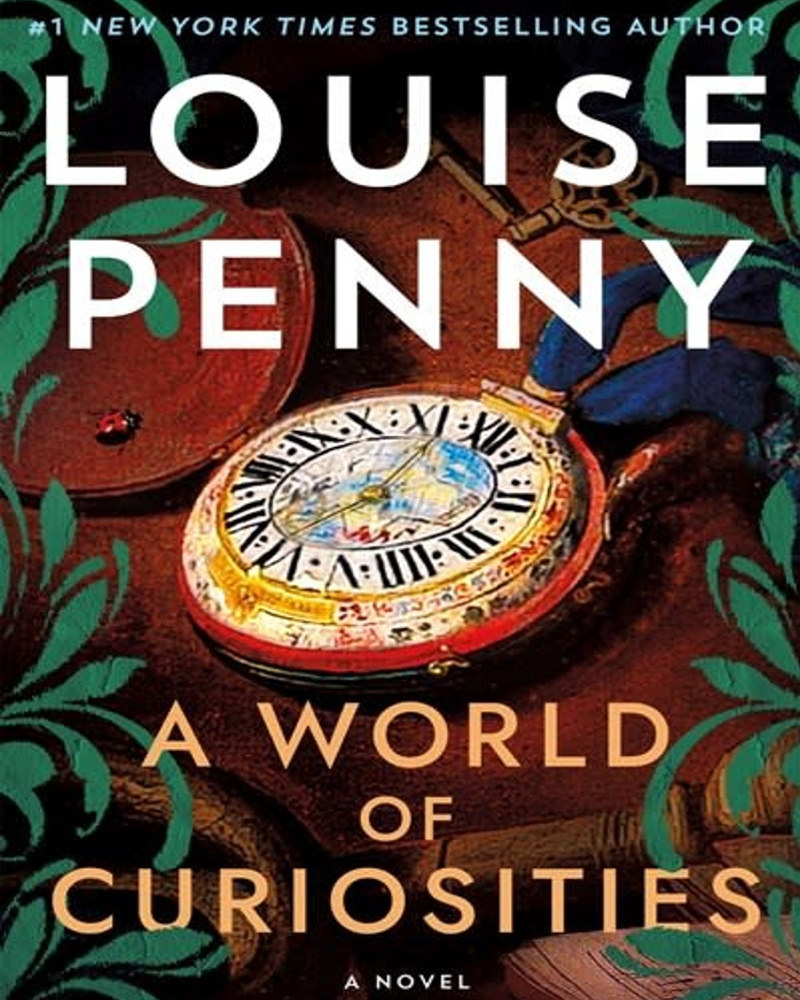In her 18th novel, featuring the inimitable Chief Inspector Armand Gamache, author Louise Penny has demonstrated once again that her bestselling novels are not formulaic. In A World of Curiosities Penny has created a darker and more sinister story, set for the most part in the Quebec village of Three Pines. The plot of the book is quite elaborate, switching between time periods and sub-plots. But it is pure Penny: engaging, fast moving, familiar yet foreign.
It’s time for a celebration in Three Pines, one of their own graduating from Polytechnic University in Quebec. This is, of course, the site of the mass murder of 14 women engineering students in 1989. It also brings back memories for Gamache of the long-ago case when he first met Jean-Guy Beauvoir, his right-hand assistant and now his son-in-law. Having read all her books, I was very interested in this backstory between these two men, as their relationship has become so vital to the novels. With this, in the very first pages, Penny takes us inside a whirling chain of events, weaving out the story.
There are so many elements to this mystery. There are Fiona and Sam, who were abused children when Gamache first met them, now adults who will be joining in the celebration in Three Pines. There is the previously undetected bricked up room on the second floor of Myrna’s bookshop. Once opened, the room reveals a multitude of mysterious clues. There is a letter from the 1800s that surfaces, with clues about the mysterious room. There is an altered copy of a famous painting, also from the 1800s, known as The World of Curiosities. There is a grimoire, an ancient text of incantations used by witches, that sends Reine-Marie on a goose chase to France. There are meals in the café, parties on the village green, and of course, the crazy old poet Ruth and her pet goose. There are dogs and children. And there is a lot of tension!
Sound a bit confusing? I also thought so. There is a lot going on, however Penny manages to keep all the balls in the air at once. I didn’t find that I was confused, losing track of things. Rather I found I was astounded at what was happening next. I think this is where Penny truly excels as an author. Her novels are very far reaching, with multiple sub-plots and potential suspects. Yet, like a crochet artist with a hook and yarn, she knots them together, leaving just enough space for the mystery. Even looking at the finished piece, it is a wonder to figure out how Penny, or the crocheter, got there in the end.
Using the massacre at the Polytechnique added a disturbing element of reality to the plot. In the acknowledgements, Penny tells us she was a young journalist for CBC Radio when the murders occurred and she reported on the events. She also tells us she contacted and worked with Nathalie Provost, a gun control advocate who survived the 1989 massacre, to ensure the accuracy and sensitivity of what she was writing.
This book was darker and more violent than earlier Penny novels. She puts the reader through a wide range of emotions encountering one situation after another: child abuse, evil, murder, witchcraft, a crazed search for revenge. Was it satisfying in the end? In the sense that Penny masterfully brings everything together and comes to a logical conclusion, it is very satisfying. It was, for me however, a bit disturbing, a bit dark. I’ll be interested to see if this continues in novel 19.












